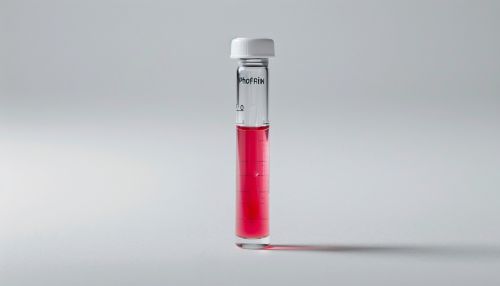Photofrin
Overview
Photofrin, also known as porfimer sodium, is a photosensitizing agent used in photodynamic therapy (PDT). It is a complex mixture of oligomers formed by ether and ester linkages of up to eight porphine units, with the majority being dimers and trimers. Photofrin is activated by light to produce a form of oxygen that kills nearby cells, making it useful in the treatment of certain types of cancer and other medical conditions.


History
Photofrin was the first photosensitizer to be approved for use in photodynamic therapy. It was initially developed by the British Columbia Cancer Agency in the 1970s and later commercialized by QLT Inc. and Axcan Pharma. The FDA approved Photofrin in 1995 for the treatment of esophageal cancer and in 1998 for the treatment of early and late-stage lung cancer.
Mechanism of Action
Photofrin is administered intravenously and is preferentially taken up by tumor cells. When exposed to light of a specific wavelength (630 nm), Photofrin becomes activated and transfers energy to molecular oxygen, creating reactive oxygen species (ROS). These ROS, particularly singlet oxygen, can cause cell death through various mechanisms, including direct damage to cellular components, induction of apoptosis, and damage to the tumor vasculature.
Clinical Uses
Photofrin is used in photodynamic therapy for the treatment of various types of cancer, including esophageal cancer, non-small cell lung cancer, and Barrett's esophagus with high-grade dysplasia. It has also been used off-label for the treatment of other conditions, such as age-related macular degeneration and psoriasis.
Side Effects and Precautions
The most common side effect of Photofrin is photosensitivity, which can last for several weeks after treatment. Patients are advised to avoid exposure to bright light and to wear protective clothing and sunglasses. Other side effects can include nausea, vomiting, constipation, and injection site reactions. Rare but serious side effects can include respiratory distress, esophageal strictures, and heart arrhythmias.
Future Directions
Research is ongoing to improve the efficacy and reduce the side effects of Photofrin. This includes the development of new photosensitizers with improved tumor selectivity and reduced photosensitivity, as well as the use of Photofrin in combination with other therapies.
